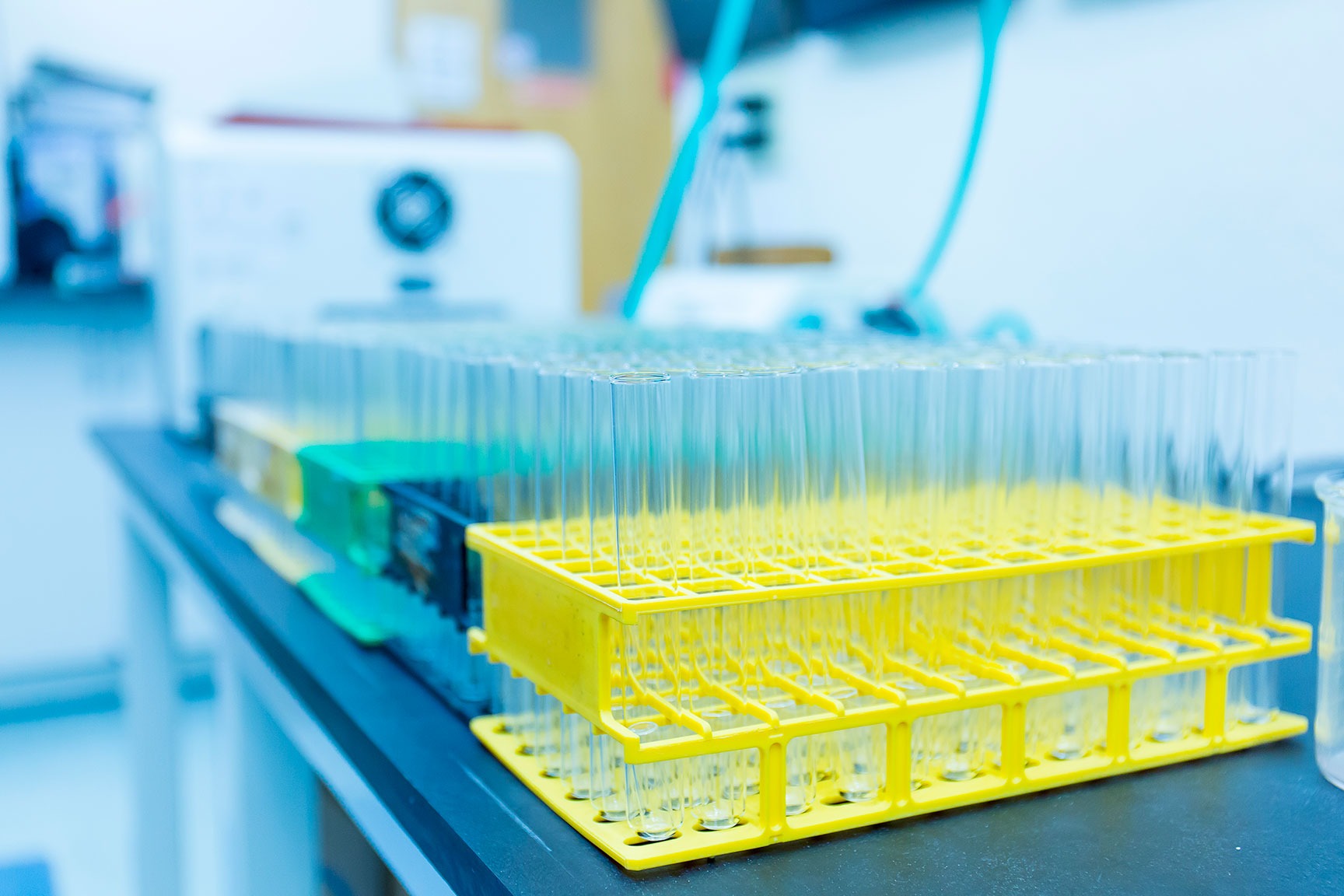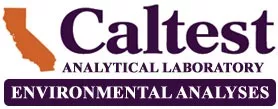
Caltest ICP-MS Metals Analysis (EPA 200.8)
Click here to view Caltest’s ICP-MS reporting limits and compound list.
When Inductively Coupled Plasma Mass Spectrometer (ICPMS) analyses first became commonly available for National Pollutant Discharge Elimination System (NPDES) permit monitoring, it was ‘cutting edge’ for many reasons. ICPMS replaced most graphite furnace atomic absorption (GFAA) analysis, and replaced ‘Trace’ ICP for most non GFAA analysis. Initially ICPMS was used for treated wastewater effluent compliance analysis, and analysis of the waters that the treatment plant discharged to. Other samples remained on the ICP or Trace ICP. Within a few years more and more matrices were requested for lowest level metals, requiring the use of the ICPMS. The Publicly Owned Treatment Works (POTW, also known as sewage treatment plants) samples of untreated influent, industrial wastes etc were a challenge to the ICPMS system. Higher dissolved solids, dirtier matrices and more mixed concentrations – some over range and some non-detect all made for a more challenging situation to run together by ICPMS. Although ICP and ICPMS is known for a wide linear range of quantitation, in practice the range is limited by the need for lowest detection limits and limiting carry over on higher standards. Many of our samples were being diluted both for matrix affects and for over-range analytes. Multiple re-runs were causing delays in sample reporting.
The instruments themselves (Perkin Elmer model 6100s) were robust and reliable, but the sample demands were pushing the technology to the limits. Increased re-runs were the primary source of reporting delays, and there was no capability of improving sensitivity of challenging analytes like selenium and arsenic. Problem samples included high TDS samples from groundwater, bay waters, industrial wastewaters and landfill leachates.
In 2007 we obtained an Agilent 7500 cx ICPMS with better sensitivity and the capability of routinely running a wider range of samples without the same rate of re-runs. The new instrument had the ‘normal mode’ that all ICPMS run for analysis by EPA’s methods 200.8 and 6020, but additionally had two additional modes of interference removal. The Agilent 7500 cx enables us to run in Collision Cell mode using Helium gas, and Reaction Cell mode with Hydrogen gas.
Collision cell, sometimes referenced as helium mode provides routine interference removal of polyatomic interferences. This effectively eliminates much of the high bias sometimes associated with matrix interference. This is especially relevant to NPDES discharge monitoring where compliance concentrations are in the 5-50 ppb range. For low levels of selenium analyses the Reaction cell mode with hydrogen gas offers the best interference removal available by ICPMS, comparable to gaseous hydride analysis, but with better sensitivity than standard approved EPA methods employing gaseous hydride sample introduction. The new instrument brought us expanded effective range, increased sensitivity and better interference removal, all very important for the samples we analyze.
Good, Bad, and Uncertainty with the New Cell based ICPMS Technology
The good: Excellent routine interference removal in the wastewaters we have tested. Better sensitivity (especially for difficult analytes like arsenic and selenium), better effective dynamic range yielding fewer re-runs. EPA explicitly allowed the cell based ICPMS as part of the Method Update Rule as applied to NPDES permit compliance analyses.
The bad: EPA Office of Water explicitly issued a moratorium on drinking water compliance analyses with cell technology until further review. As of this writing they have not rendered a decision yet. Cell based instruments may be used, but only data generated in the ‘normal’ or ‘no gas’ mode will be acceptable until further department review.
The uncertain: Each system will have to be reviewed as part of the method update rule regarding the method conformance. Different manufacturers have proprietary approaches to cell technology, and will have to each be evaluated prior to use for compliance analyses.
Summary
ICPMS is the state of the art in trace metals analyses. The technique has been significantly enhanced by the addition of the cell technology for interference removal. Collision cell is potentially effective in reducing interferences for As, Cr, Cu, (per the manufacturer) and has been observed to reduce interference in analyses of POTW samples at our lab for As, Cu, Ni, and Se. Our experience is that the new Agilent 7500cx has given us enhanced sensitivity and better matrix handling options for our clients. For more information about our Trace Metals Capabilities and experience please contact Caltest Analytical Laboratory.
For more information, or a quote, please call us or email info@caltestlabs.com
